Robust Anti-Jamming Algorithm Based on Transmit/Receive Time-Sharing Technology
Abstract
:1. Introduction
2. Mathematical Model
2.1. Transmit/Receive Time-Sharing Model
2.2. Time-Domain Anti-Jamming Model
3. Influence Analysis of Time-Domain Anti-Jamming on Burst Signal
4. Robust Anti-Jamming Algorithm Based on the Transmit/Receive Time-Sharing
4.1. Robust Anti-Jamming Algorithm
4.2. Performance Analysis
5. Simulation Experimental Verification
6. Conclusions
Author Contributions
Funding
Institutional Review Board Statement
Informed Consent Statement
Acknowledgments
Conflicts of Interest
References
- Azmi, P.; Tavakkoli, N. Narrow-Band Interference Suppression in CDMA Spread-Spectrum Communication Systems Using Pre-Processing Based Techniques in Transform-Domain. IEICE Trans. Commun. 2008, 85, 239–246. [Google Scholar] [CrossRef] [Green Version]
- Radanliev, P.; De Roure, D. New and emerging forms of data and technologies: Literature and bibliometric review. Multimed. Tools Appl. 2022. [Google Scholar] [CrossRef] [PubMed]
- Cao, L.; An, X.; Hong, G.; Guo, B. Analysis of measurement biases induced by adaptive antenna arrays for GNSS receivers. In Proceedings of the 2016 12th International Conference on Natural Computation, Fuzzy Systems and Knowledge Discovery (ICNC-FSKD), Changsha, China, 13–15 August 2016; pp. 1863–1867. [Google Scholar]
- Lu, Z.; Nie, J.; Chen, F.; Ou, G. Impact on Antijamming Performance of Channel Mismatch in GNSS Antenna Arrays Receivers. Int. J. Antennas Propag. 2016, 2016, 1909708. [Google Scholar] [CrossRef]
- Chien, Y.-R.; Huang, Y.-C.; Yang, D.-N.; Tsao, H.-W. A Novel Continuous Wave Interference Detectable Adaptive Notch Filter for GPS Receivers. In Proceedings of the 2010 IEEE Global Telecommunications Conference GLOBECOM 2010, Miami, FL, USA, 6–10 December 2010; pp. 1–6. [Google Scholar]
- Du, Y.; Gao, Y.; Liu, J.; Xi, X. Frequency-Space Domain Anti-Jamming Algorithm Assisted with Probability Statistics. In Proceedings of the 2013 International Conference on Information Technology and Applications, Chengdu, China, 16–17 November 2013; pp. 5–8. [Google Scholar]
- Fan, G.; Tang, X.; Nie, J.; Huang, Y.; Sun, G. A Zero Bias Frequency-Domain Interference Suppressor for GNSS Receivers. IEICE Trans. Commun. 2016, E99.B, 2081–2086. [Google Scholar] [CrossRef]
- Fan, G.T.; Zhang, F.; Ran, D.C. An unbiased carrier-phase anti-interference filter based on mirror frequency amplitude compensation. Adv. Space Res. 2021, 67, 806–811. [Google Scholar] [CrossRef]
- Issam, S.M.; Adnane, A.; Madiabdessalam, A. Anti-Jamming techniques for aviation GNSS-based navigation systems: Survey. In Proceedings of the 2020 IEEE 2nd International Conference on Electronics, Control, Optimization and Computer Science (ICECOCS), Kenitra, Morocco, 2–3 December 2020; pp. 1–4. [Google Scholar]
- Abdulkarim, Y.I.; Xiao, M.; Awl, H.N.; Muhammadsharifd, F.F.; Lang, T.; Saeed, S.R.; Alkurt, F.O.; Bakire, M.; Karaaslan, M.; Dong, J. Simulation and Lithographic Fabrication of a Triple Band Terahertz Metamaterial Absorber Coated on Flexible Polyethylene Terephthalate Substrate. Opt. Mater. Express 2021, 12, 338–359. [Google Scholar] [CrossRef]
- Gu, Y.; Tang, K.; Cui, H. LMS algorithm with gradient descent filter length. IEEE Signal Process. Lett. 2004, 11, 305–307. [Google Scholar] [CrossRef]
- Hwang, S.-S. Adaptive Algorithms for a GPS Interference Suppression Receiver and a Sparse Reconfigurable Adaptive Filter; University of California: Santa Barbara, CA, USA, 2006. [Google Scholar]
- Yu, X.; Yang, Q.; Xiao, Z.; Chen, H.; Havyarimana, V.; Han, Z. A Precoding Approach for Dual-Functional Radar-Communication System With One-Bit DACs. IEEE J. Sel. Areas Commun. 2022, 40, 1965–1977. [Google Scholar] [CrossRef]
- Hao, Z.; Zhao, H.; Shao, S.; Tang, Y. Suppression of Time-varying Multi-tone Interference Based on Frequency Domain Interference Detection. Wirel. Pers. Commun. 2014, 75, 1051–1060. [Google Scholar] [CrossRef]
- Huang, L.; Lu, Z.; Xiao, Z.; Ren, C.; Song, J.; Li, B. Suppression of Jammer Multipath in GNSS Antenna Array Receiver. Remote Sens. 2022, 14, 350. [Google Scholar] [CrossRef]
- Dong, H.; Chi, X.F.; Liang-Dong, Q.U.; Shi, Y.W.; Zhao, X.H.; Dong, C. Anti-interference performance of TDCS based on Levinson algorithm of cross spectrum AR model parameter estimation. J. Jilin Univ. 2014, 3, 812–817. [Google Scholar]
- Gong, Y.; Cowan, C.F.N. An LMS style variable tap-length algorithm for structure adaptation. IEEE Trans. Signal Process. 2005, 53, 2400–2407. [Google Scholar] [CrossRef] [Green Version]
- Bai, Y.; Guo, Y.M.; Wang, X.; Lu, X.C. Satellite-Ground Two-Way Measuring Method and Performance Evaluation of BDS-3 Inter-Satellite Link System. IEEE Access 2020, 8, 157530–157540. [Google Scholar] [CrossRef]
- Han, Z.Z.; Wu, Y.Z.; Liang, M.T.; Ma, Y.H.; Li, X.M. Summary of transceiver isolation technology for cw radar microstrip antenna. In Proceedings of the 2020 5th International Conference on Electromechanical Control Technology and Transportation (ICECTT 2020), Nanchang, China, 15–17 May 2020; pp. 167–171. [Google Scholar]
- Cai, Z.W.; Han, C.H.; Du, Y.; Yang, L.; SciRes. Orbit Determination Method and Accuracy Analysis Utilizing Satellite-Ground and Satellite-Satellite Links. In Proceedings of the CSNC 2011: 2nd China Satellite Navigation Conference, Shanghai, China, 18–20 May 2011; Volume 1–3, pp. 472–476. [Google Scholar]
- Li, X.; Chen, F.; Lu, Z.; Liu, Z.; Ou, G. Overview of Anti-Jamming Technology Based on GNSS Single-Antenna Receiver. In Proceedings of the 2020 3rd International Conference on Geoinformatics and Data Analysis, Marseille, France, 15–17 April 2020; pp. 96–104. [Google Scholar]
- McGraw, G.A.; McDowell, C.; Young, R.S.Y.; Glessner, D.W. Assessment of GPS anti-jam system pseudorange and carrier phase measurement error effects. In Proceedings of the 18th International Technical Meeting of the Satellite Division of The Institute of Navigation, ION GNSS 2005, Long Beach, CA, USA, 13–16 September 2005; pp. 603–607. [Google Scholar]
- Lu, Z.; Nie, J.; Chen, F.; Chen, H.; Ou, G. Adaptive Time Taps of STAP Under Channel Mismatch for GNSS Antenna Arrays. IEEE Trans. Instrum. Meas. 2017, 66, 2813–2824. [Google Scholar] [CrossRef]
- Widrow, B.; McCool, J.M.; Larimore, M.G.; Johnson, C.R. Stationary and nonstationary learning characteristics of the LMS adaptive filter. Proc. IEEE 1976, 64, 1151–1162. [Google Scholar] [CrossRef]
- Luo, Z.J.; Zhao, L.; Chen, D.B.; Xue, C.J.; Wu, S.Y. Optimizing Effect of the High-Impedance Surface on Radiation Performances of the Vlasov Launcher. In Proceedings of the 2017 IEEE Asia Pacific Microwave Conference (APMC), Kuala Lumpar, Malaysia, 13–16 November 2017; pp. 349–352. [Google Scholar]
- Zhao, L.Q.; Hu, X.G.; Tang, C.P.; Zhou, S.S.; Cao, Y.L.; Wang, Q.X.; Su, R.R. Inter-satellite link augmented BeiDou-3 orbit determination for precise point positioning. Chin. J. Aeronaut. 2022, 35, 332–343. [Google Scholar] [CrossRef]
- Yang, W.K.; Gong, H.; Liu, Z.J.; Li, Y.L.; Sun, G.F. Improved two-way satellite time and frequency transfer with Multi-GEO in BeiDou navigation system. Sci. China-Inf. Sci. 2014, 57, 1–15. [Google Scholar] [CrossRef] [Green Version]
- Lu, Z.; Nie, J.; Wan, Y.; Gang, O. Optimal reference element for interference suppression in GNSS antenna arrays under channel mismatch. IET Radar Sonar Navig. 2017, 11, 1161–1169. [Google Scholar] [CrossRef]
- Ketchum, J.; Proakis, J. Adaptive Algorithms for Estimating and Suppressing Narrow-Band Interference in PN Spread-Spectrum Systems. IEEE Trans. Commun. 1982, 30, 913–924. [Google Scholar] [CrossRef]
- Song, J.; Lu, Z.; Xiao, Z.; Li, B.; Sun, G. Optimal Order of Time-Domain Adaptive Filter for Anti-Jamming Navigation Receiver. Remote Sens. 2022, 14, 48. [Google Scholar] [CrossRef]
- Mammela, A. The performance of adaptive interference suppression filters used in PN spread-spectrum systems. In Proceedings of the 8th European Conference on Electrotechnics, Conference Proceedings on Area Communication, Stockholm, Sweden, 13–17 June 1988; pp. 126–129. [Google Scholar]
- Wang, J.; Peng, J.; Xu, X.; You, X.; Liu, S. A single-input Narrow-band Interference Suppression and Smoothing Algorithm Based on LMS Filter. In Proceedings of the 2019 IEEE 2nd International Conference on Electronic Information and Communication Technology (ICEICT), Harbin, China, 20–22 January 2019; pp. 192–198. [Google Scholar]
- Lu, Z.; Song, J.; Huang, L.; Ren, C.; Xiao, Z.; Li, B. Distortionless 1/2 Overlap Windowing in Frequency Domain Anti-Jamming of Satellite Navigation Receivers. Remote Sens. 2022, 14, 1801. [Google Scholar] [CrossRef]
- Wei, Y.; Yan, Z. Variable Tap-Length LMS Algorithm with Adaptive Step Size. Circuits Syst. Signal Process. 2017, 36, 2815–2827. [Google Scholar] [CrossRef]
- Zhong, W. Linear Phase FIR Digital Filter Design Using Differential Evolution Algorithms. Master’s Thesis, University of Windsor, Windsor, ON, Canada, 2017. [Google Scholar]
- Kwong, R.H.; Johnston, E.W. A variable step size LMS algorithm. IEEE Trans. Signal Process. 1992, 40, 1633–1642. [Google Scholar] [CrossRef] [Green Version]
- Shin, H.-C.; Sayed, A.H.; Song, W.-J. Variable step-size NLMS and affine projection algorithms. IEEE Signal Process. Lett. 2004, 11, 132–135. [Google Scholar] [CrossRef]
- Wang, B.; Sun, Y.J.; Liu, Y.; Zhang, Y.Z.; Li, S. Experimental Research on Narrowband Interference Suppression of GNSS Signals. Wirel. Commun. Mob. Comput. 2021, 2021, 3410741. [Google Scholar] [CrossRef]
- Yasyukevich, Y.V.; Yasyukevich, A.S.; Astafyeva, E.I. How modernized and strengthened GPS signals enhance the system performance during solar radio bursts. GPS Solut. 2021, 25, 46. [Google Scholar] [CrossRef]
- Shu, Y.M.; Fang, R.X.; Liu, J.N. Stochastic Models of Very High-Rate (50 Hz) GPS/BeiDou Code and Phase Observations. Remote Sens. 2017, 9, 1188. [Google Scholar] [CrossRef]
- Li, H.; Huo, Q.; Zheng, X.; Yan, S.; He, Y. High Dynamic GNSS Anti-jamming Algorithms Based on Nulling Widening and Deepening. In Proceedings of the 2020 IEEE 4th Information Technology, Networking, Electronic and Automation Control Conference (ITNEC), Chongqing, China, 12–14 June 2020; pp. 1562–1568. [Google Scholar]
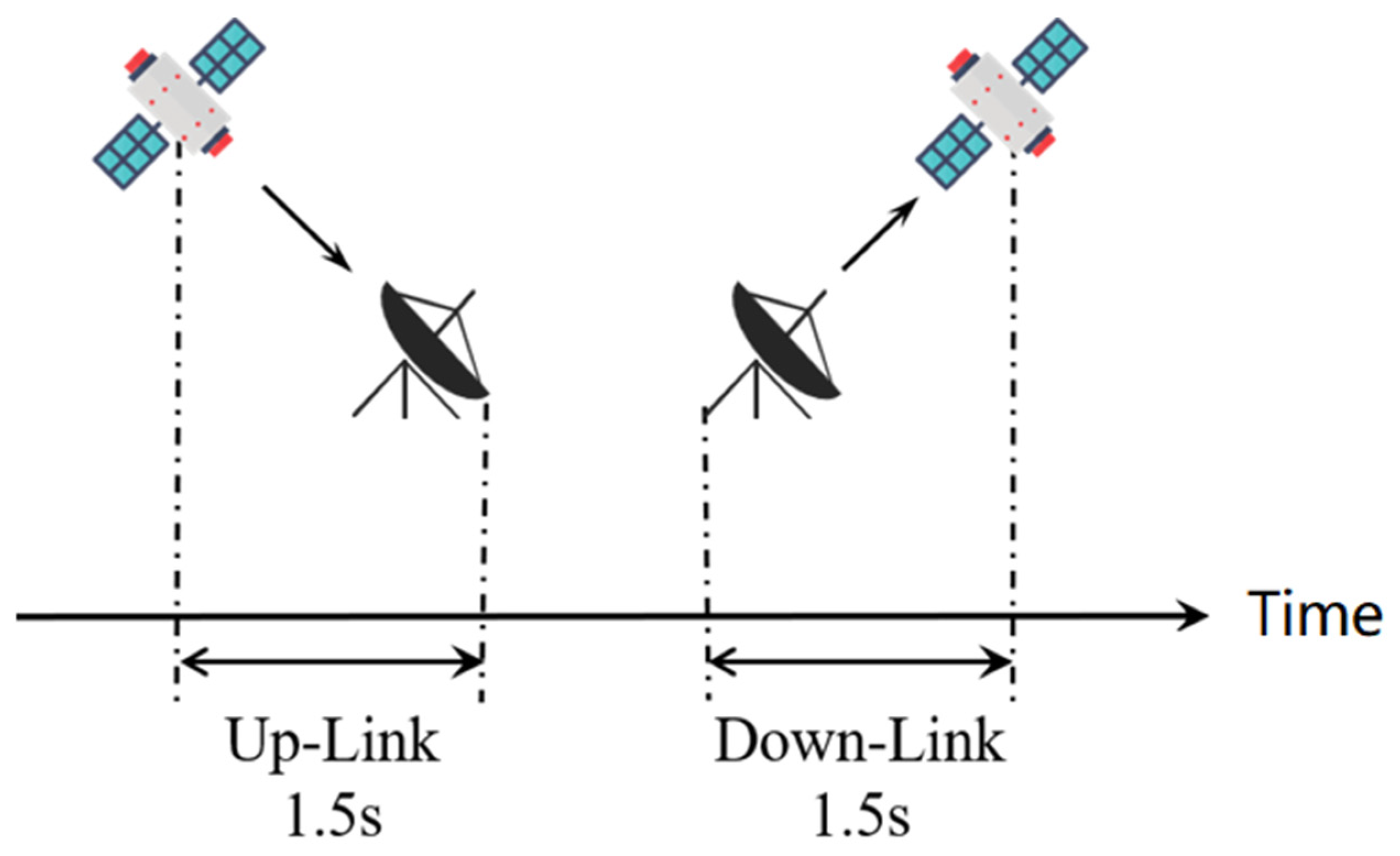
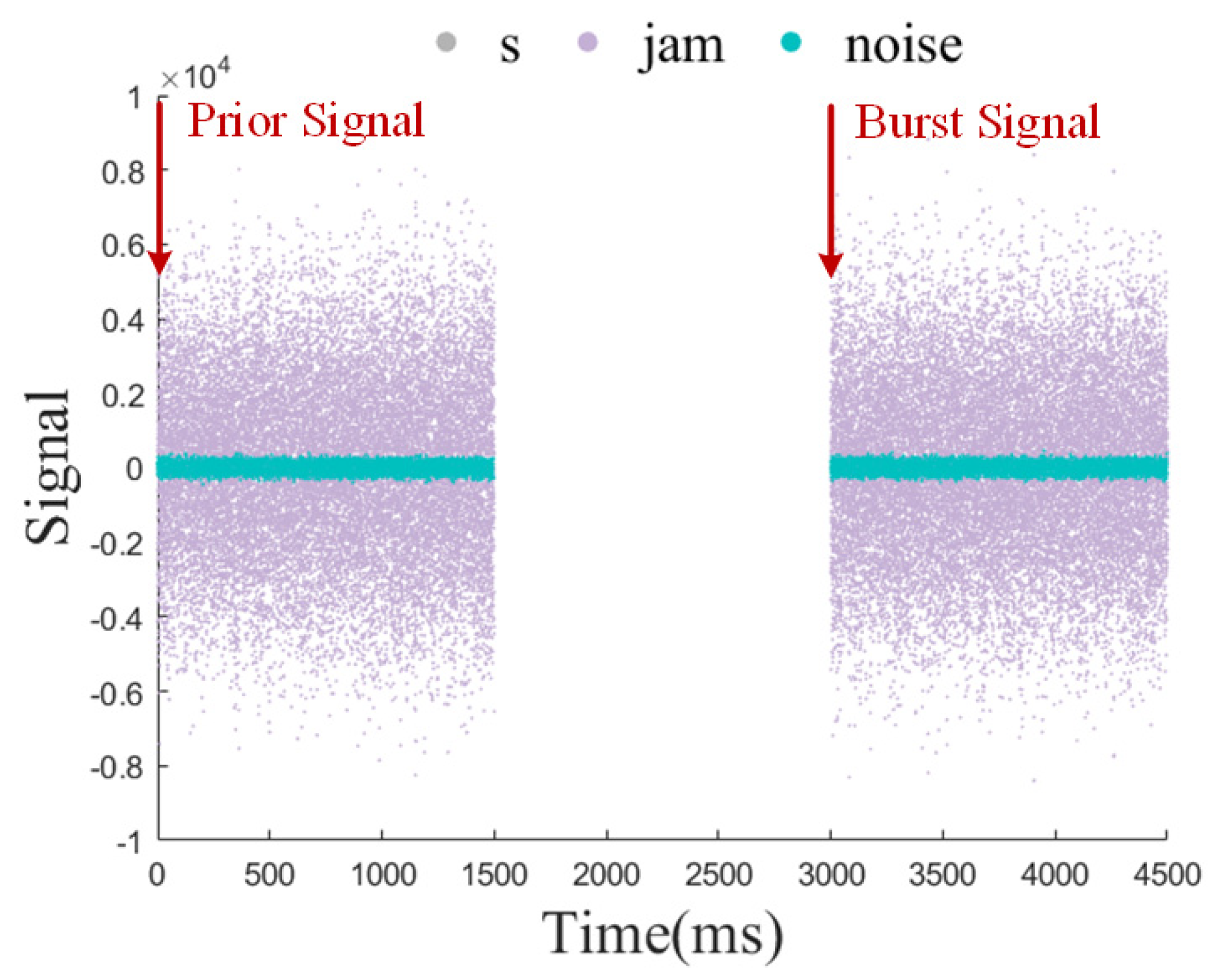
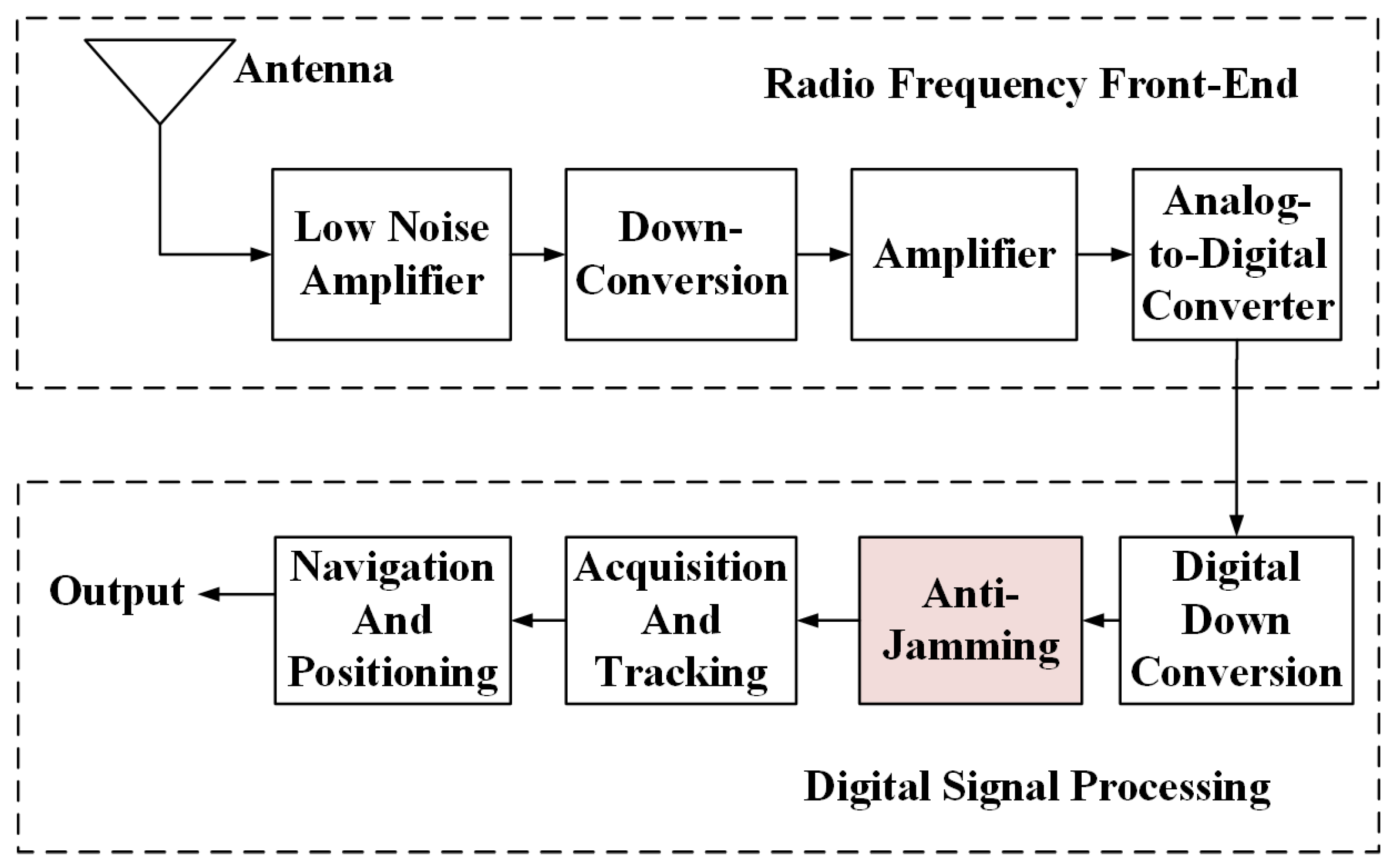
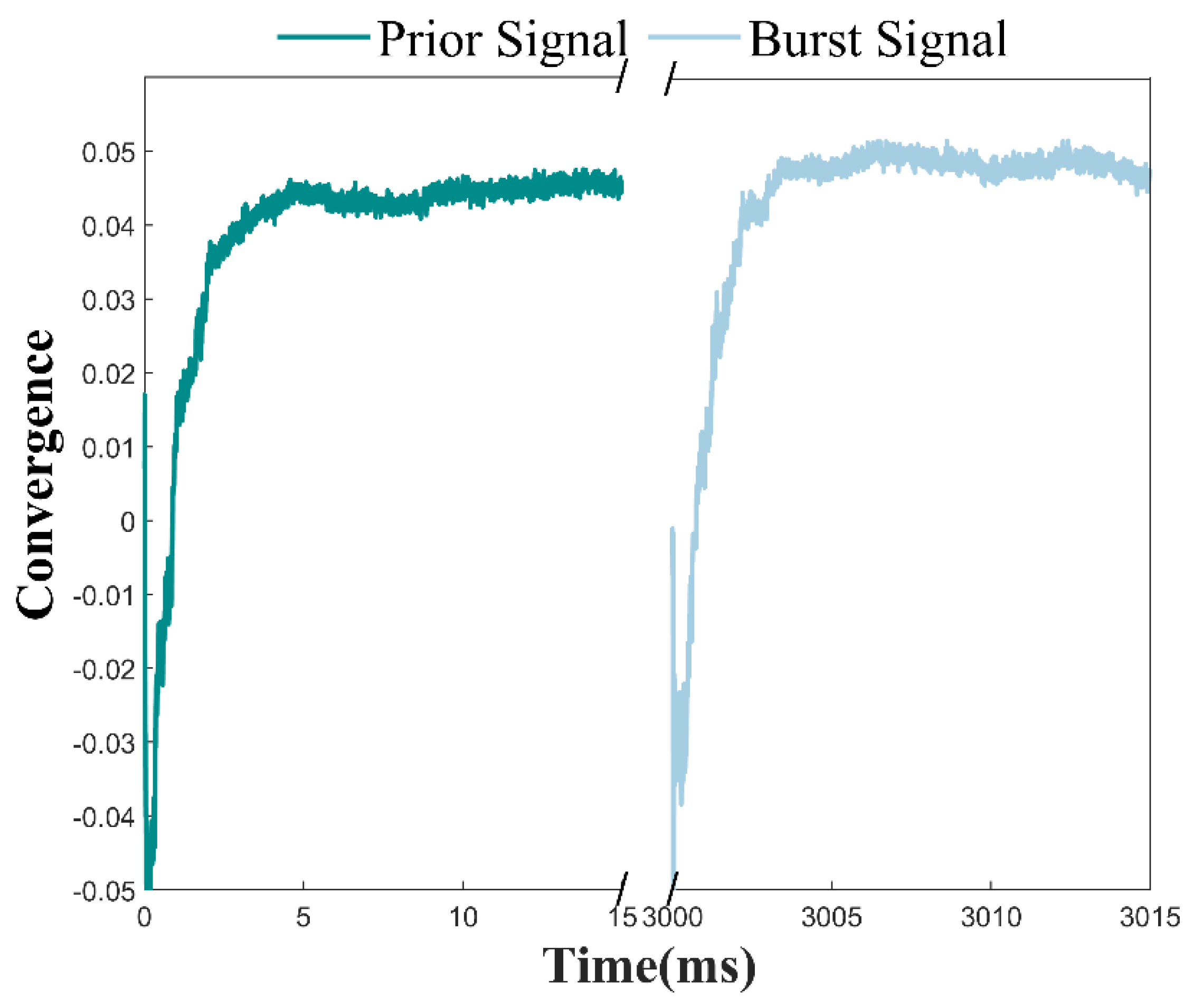

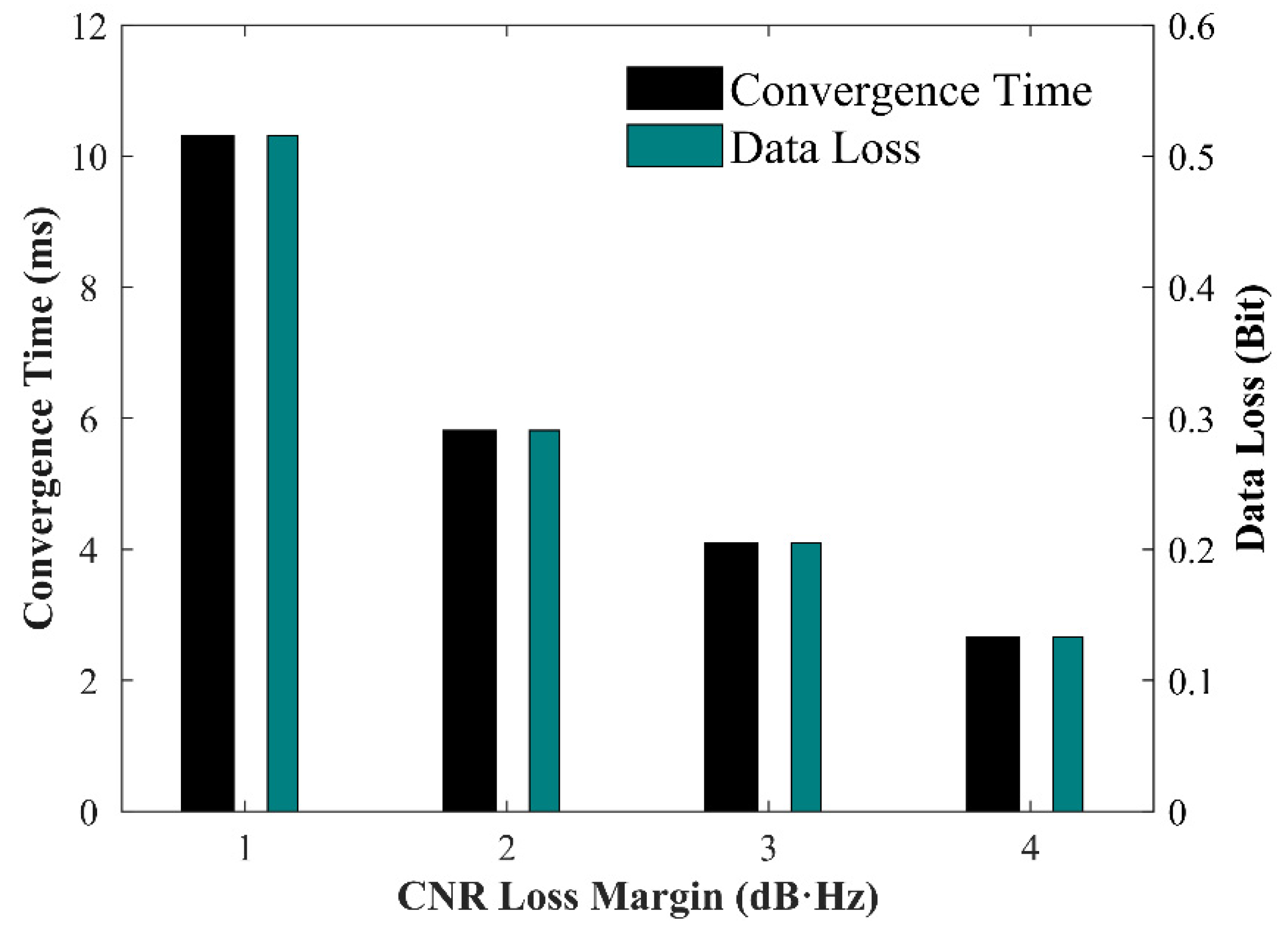

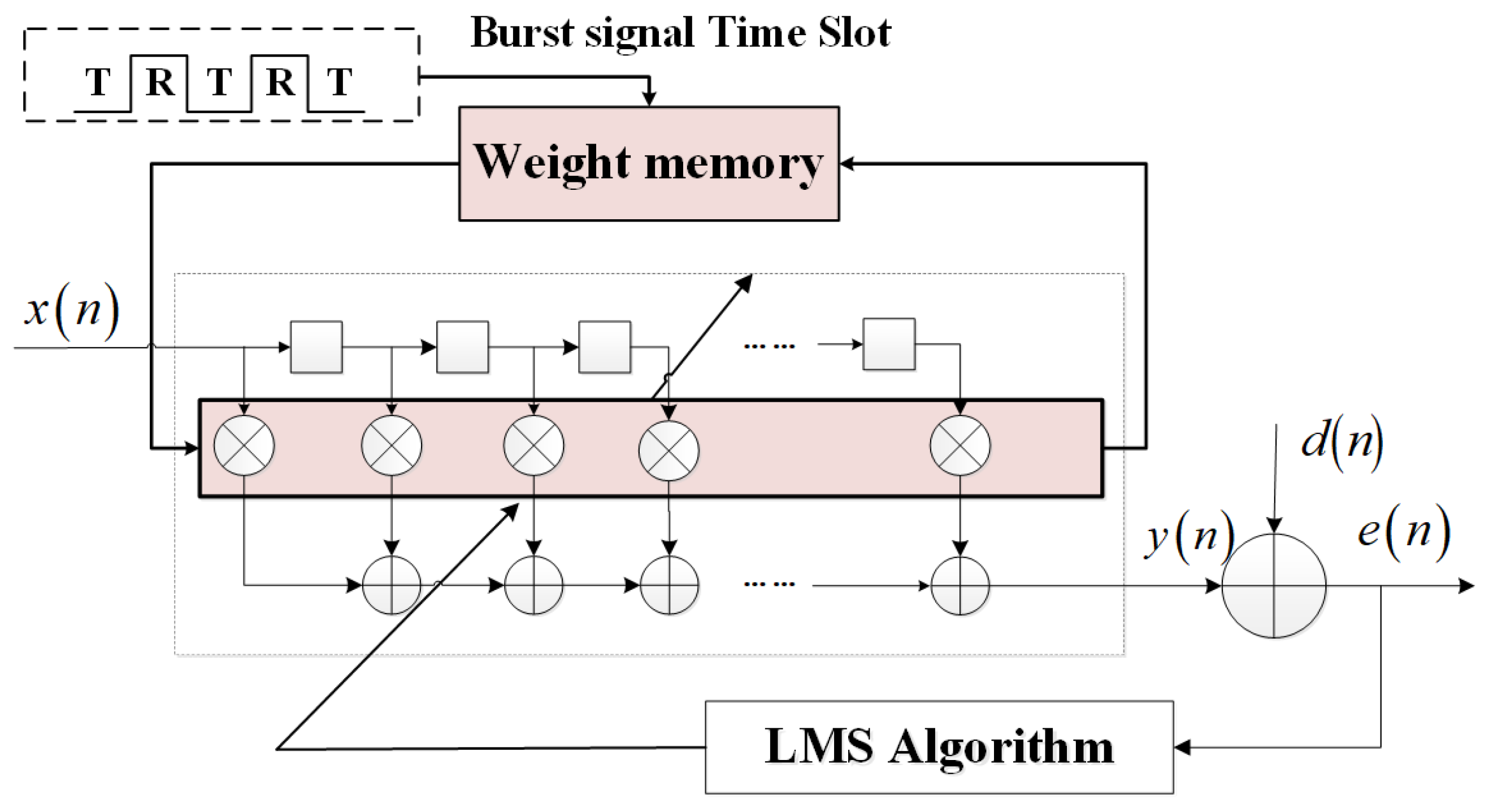
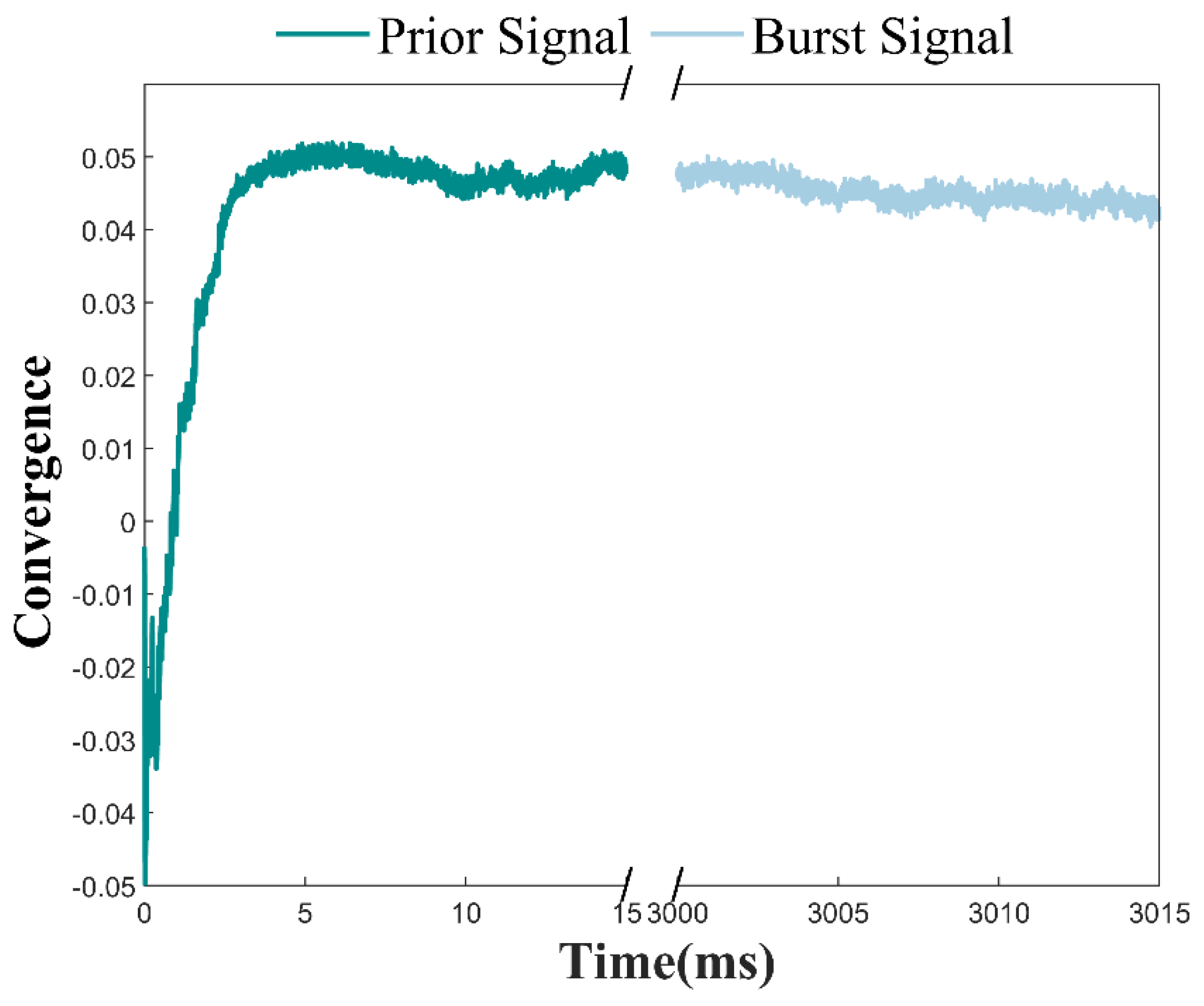
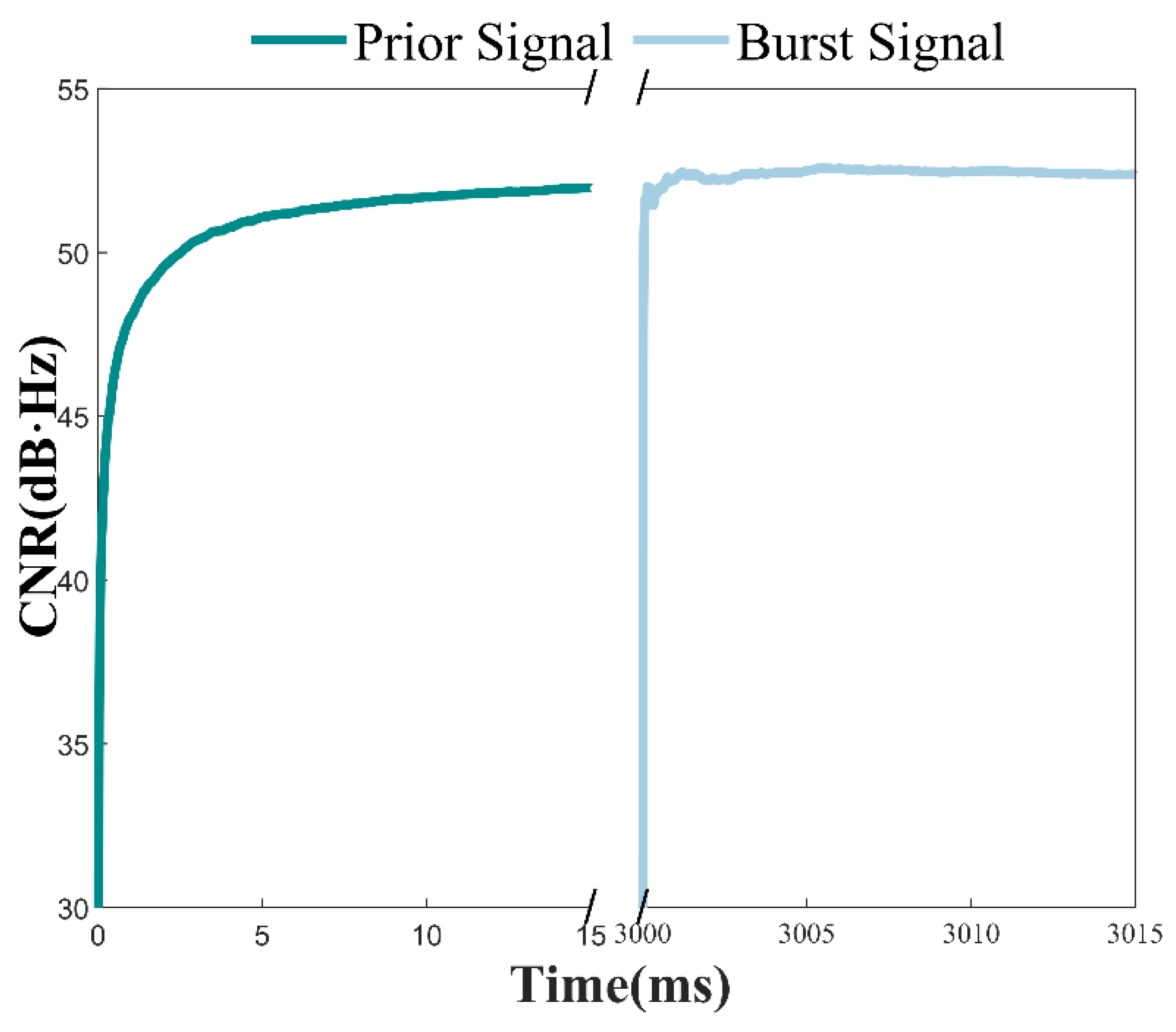
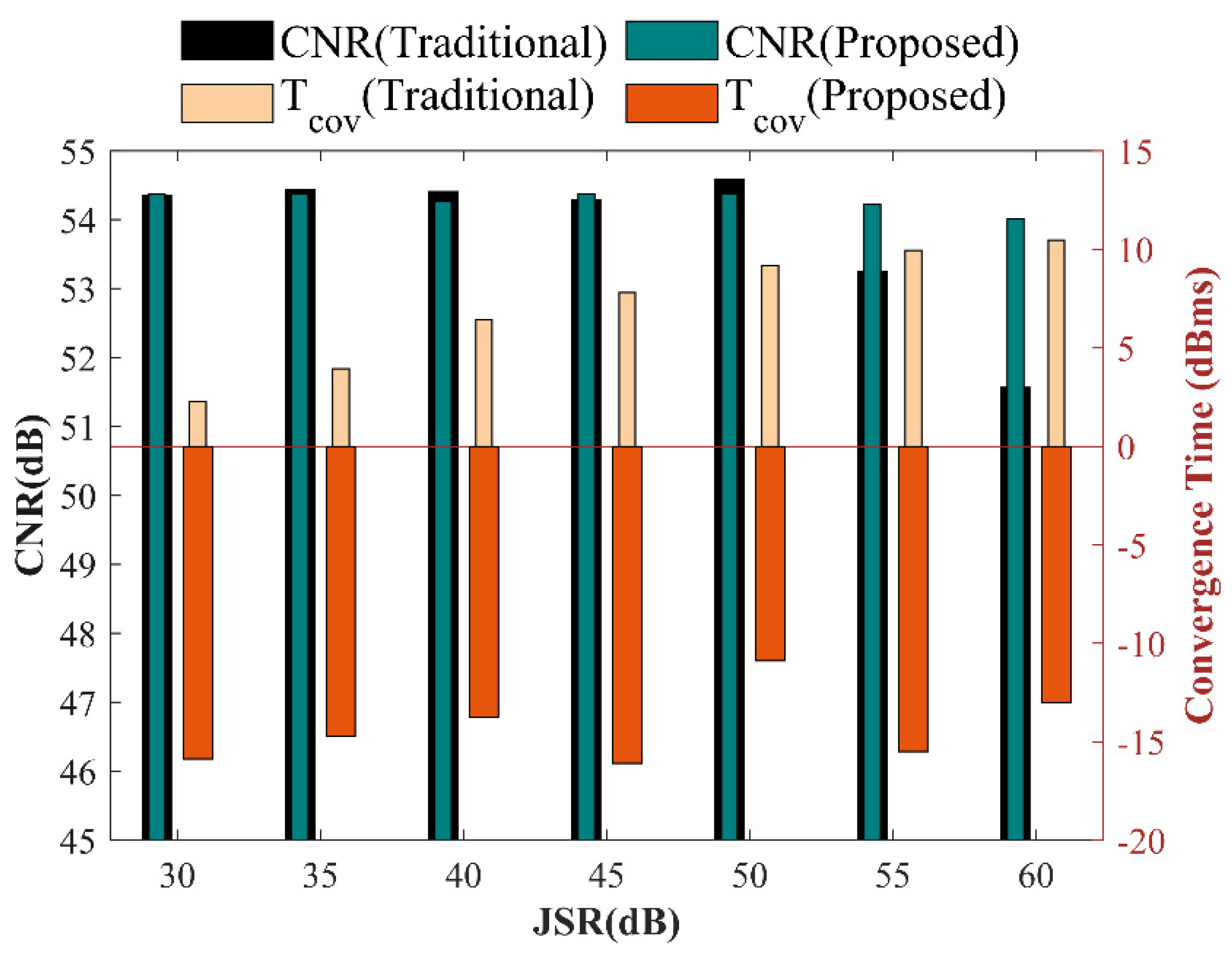
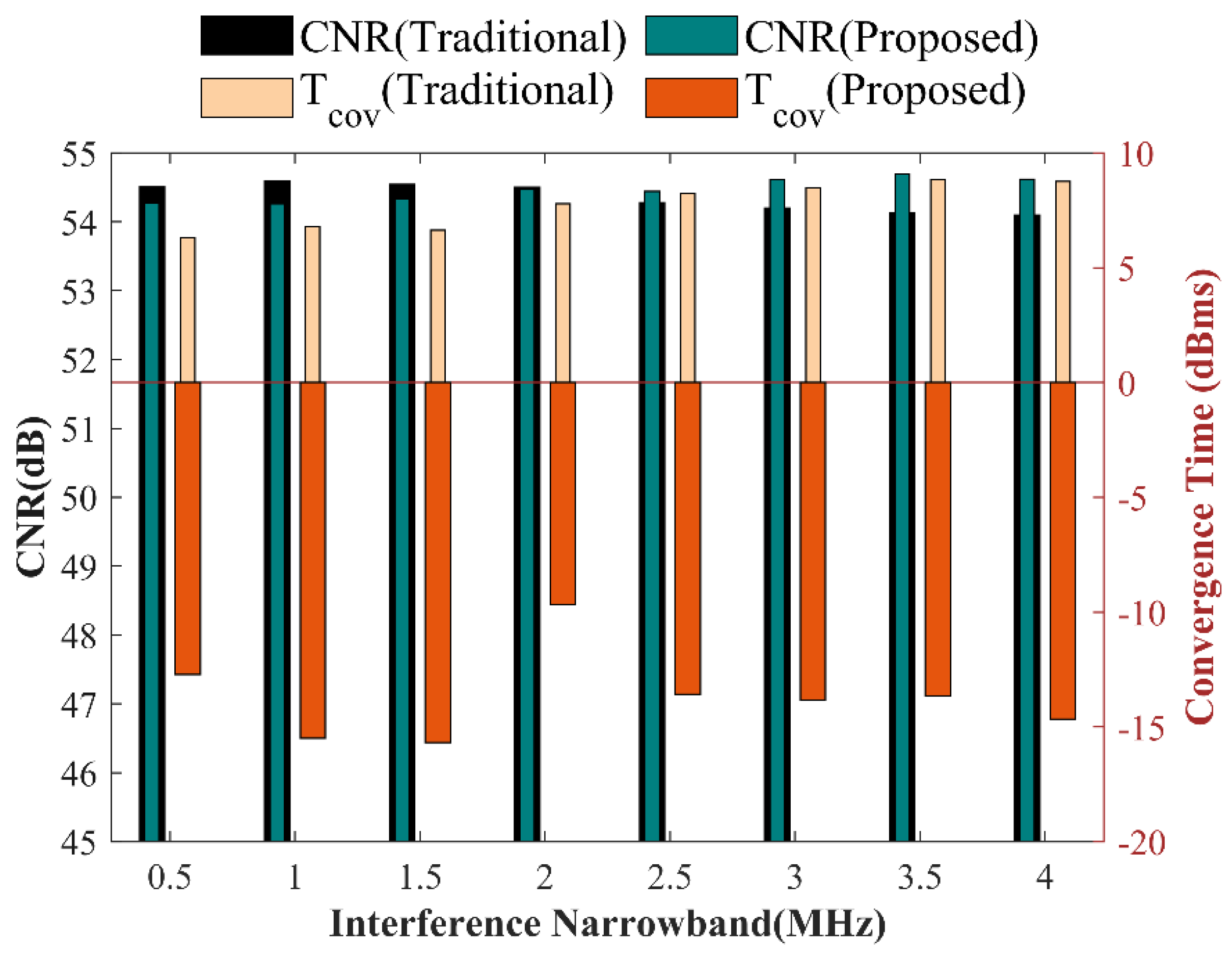
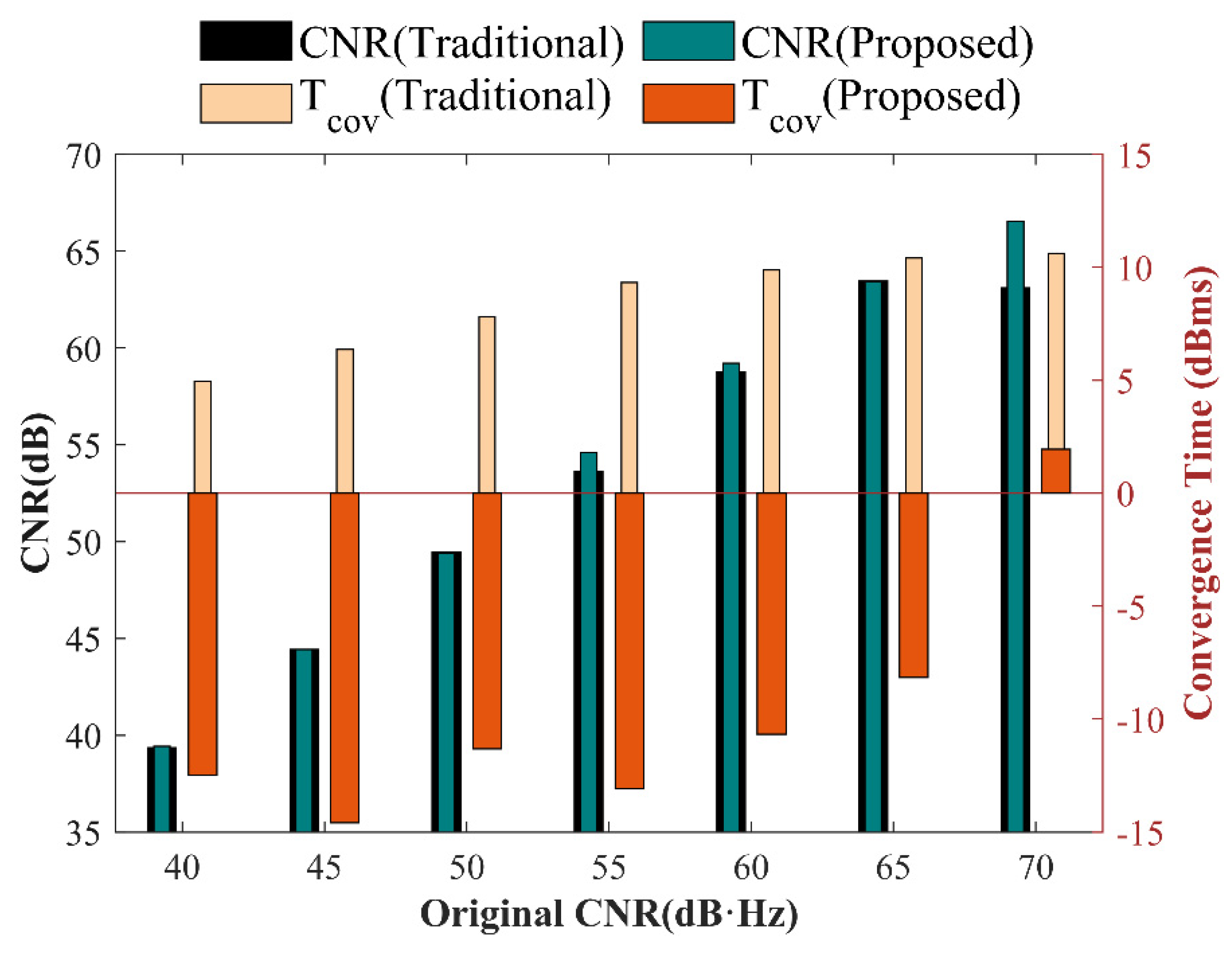
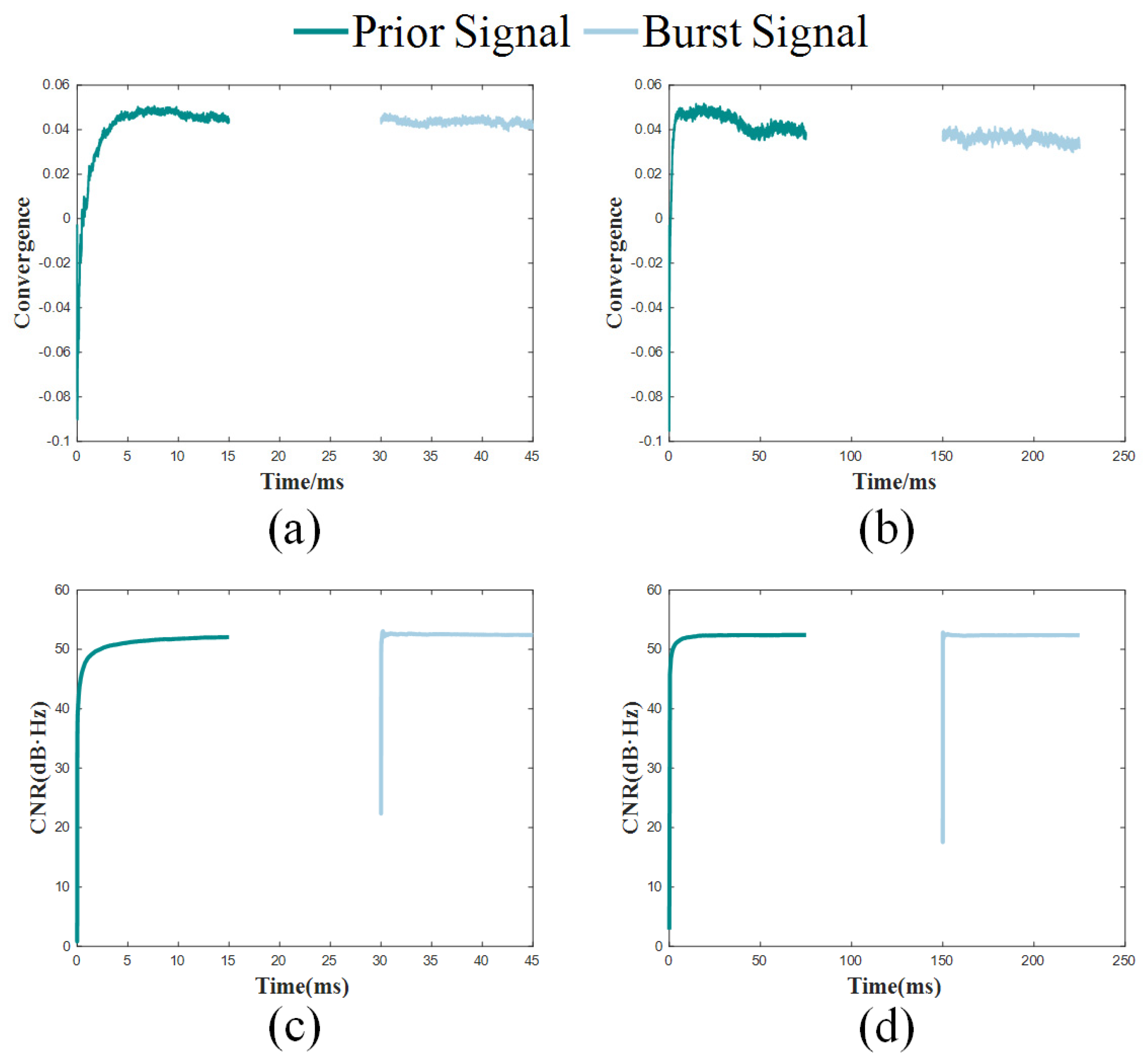
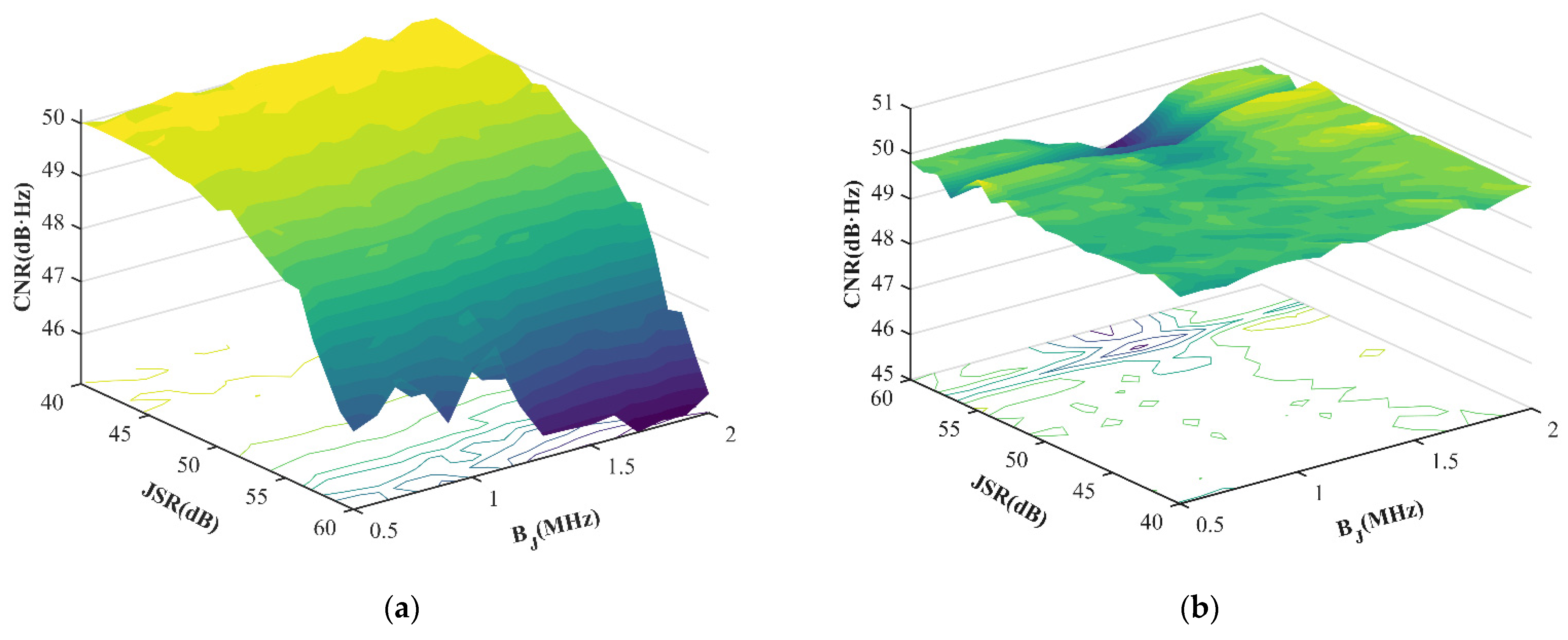
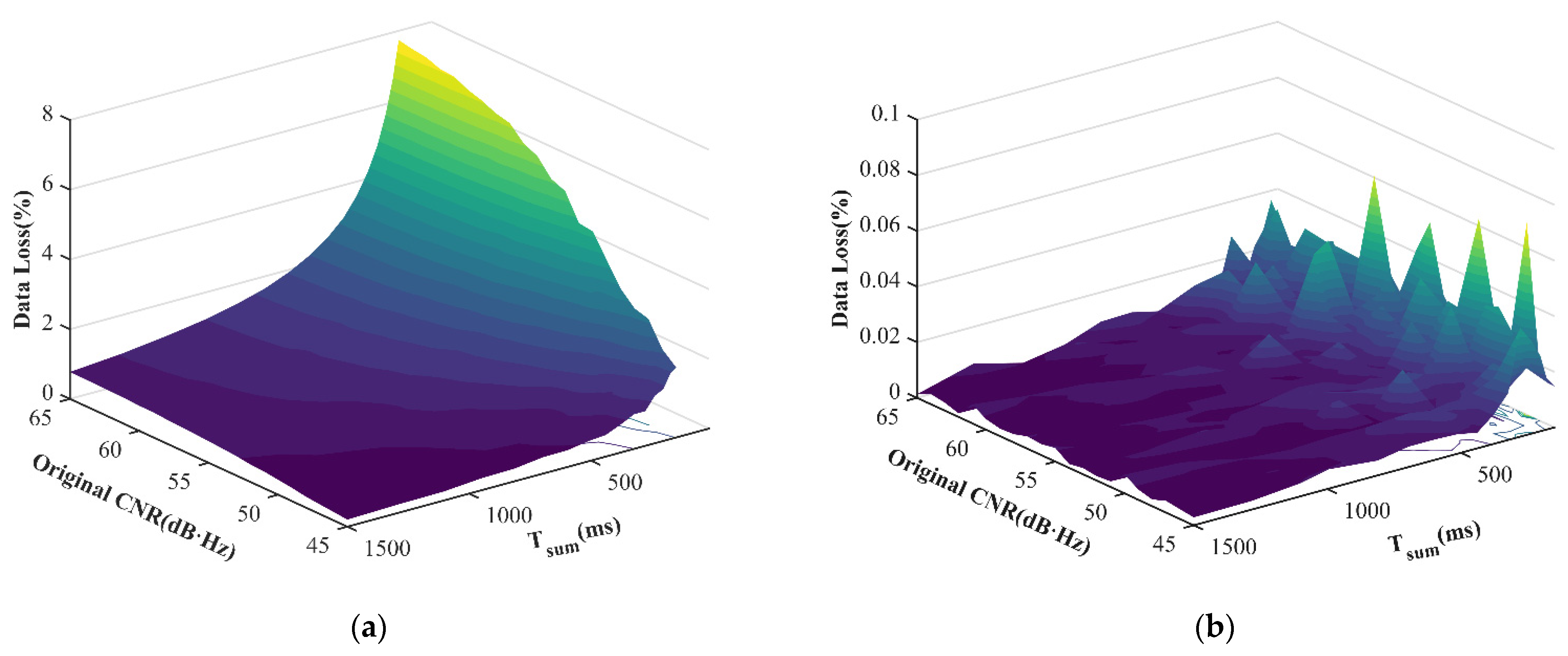
Publisher’s Note: MDPI stays neutral with regard to jurisdictional claims in published maps and institutional affiliations. |
© 2022 by the authors. Licensee MDPI, Basel, Switzerland. This article is an open access article distributed under the terms and conditions of the Creative Commons Attribution (CC BY) license (https://creativecommons.org/licenses/by/4.0/).
Share and Cite
Li, B.; Lu, Z.; Song, J.; Xiao, W.; Qiao, J.; Huang, L.; Xiao, Z.; Lin, B. Robust Anti-Jamming Algorithm Based on Transmit/Receive Time-Sharing Technology. Machines 2022, 10, 952. https://doi.org/10.3390/machines10100952
Li B, Lu Z, Song J, Xiao W, Qiao J, Huang L, Xiao Z, Lin B. Robust Anti-Jamming Algorithm Based on Transmit/Receive Time-Sharing Technology. Machines. 2022; 10(10):952. https://doi.org/10.3390/machines10100952
Chicago/Turabian StyleLi, Baiyu, Zukun Lu, Jie Song, Wei Xiao, Jia Qiao, Long Huang, Zhibin Xiao, and Baojun Lin. 2022. "Robust Anti-Jamming Algorithm Based on Transmit/Receive Time-Sharing Technology" Machines 10, no. 10: 952. https://doi.org/10.3390/machines10100952




